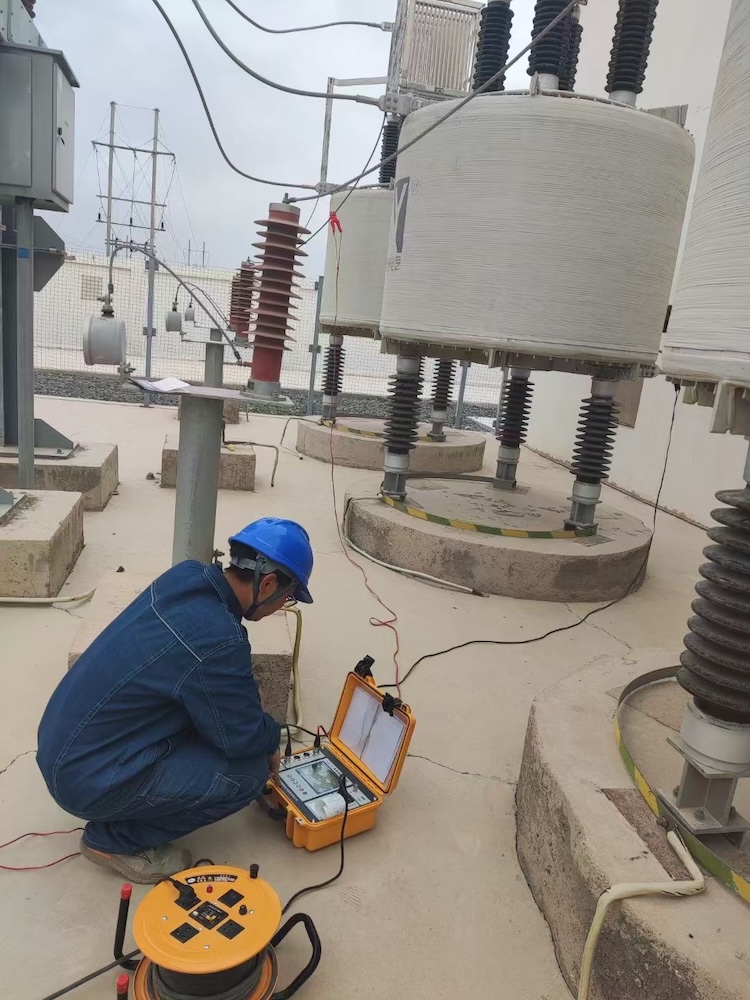Application of Contact Resistance Testing in Daily Maintenance of Transformers

In the power system, transformers are essential electrical devices, and their performance directly impacts the safety and stability of electricity supply. Contact resistance testing is a vital method for ensuring the efficient and safe operation of transformers. By assessing the state of electrical connections, potential issues can be identified in a timely manner. This article will explore the key applications of contact resistance testing in the daily maintenance of transformers.
1. Detecting the Condition of Tap Changer Contacts
The tap changer is a critical component for adjusting the output voltage of a transformer. The level of contact resistance directly affects the efficiency of current flow and the stability of the equipment. During operation, the contacts of the tap changer can easily deteriorate due to wear, environmental impacts, or oxidation, leading to poor contact. Regular contact resistance testing allows real-time monitoring of the contact state. If any abnormal resistance values are detected, maintenance personnel can promptly clean, adjust, or replace the components, preventing serious incidents such as overheating or fires caused by poor contact.
2. Assessing the Health of Connection Points
Transformers have numerous electrical connection points, both internally and externally, such as connections between windings and leads, and between bushings and conductors. These connection points are subjected to high current and voltage, making them prone to corrosion, loosening, or oxidation, which can increase contact resistance. Through contact resistance testing, engineers can evaluate the health of these connection points, enabling the timely identification and rectification of issues, thereby ensuring the reliability of the entire electrical connection system and reducing the risk of failures.
3. Preventing Failures and Extending Equipment Lifespan
The regular implementation of contact resistance testing significantly reduces the risk of failures and extends the lifespan of transformers. By identifying potential issues such as poor contact early on, it helps prevent high temperatures that could lead to fires or equipment damage. For critical components, it is recommended to conduct a comprehensive contact resistance check at least annually to ensure their performance remains within safe parameters. This not only protects the equipment but also minimizes maintenance and replacement frequencies, resulting in cost savings.
4. Improving Maintenance Efficiency
Contact resistance testing is a quick and effective method that can be conducted while the equipment is energized, greatly reducing downtime. Modern contact resistance testers often come equipped with data storage and transmission capabilities, allowing automatic data recording post-testing, which simplifies subsequent analysis and troubleshooting. The portability of these instruments also facilitates on-site testing, enhancing the overall efficiency of maintenance work.
5. Ensuring System Stability and Safety
High contact resistance can lead to overheating during operation, causing insulation aging and short circuits, which can compromise the stability and safety of the transformer. By conducting regular contact resistance testing, engineers can ensure that the transformer operates safely within its rated current, promptly addressing any issues related to poor contact. This proactive approach effectively lowers the failure rate of the equipment, ensuring the stability of the power system.
6. Meeting Regulatory Requirements and Industry Standards
Many countries and regions have established clear regulations requiring regular contact resistance testing to ensure public safety and equipment reliability. By adhering to these standards, power companies can effectively mitigate safety hazards and ensure compliance, which in turn enhances public trust in electricity supply.
Contact resistance testing plays an indispensable role in the daily maintenance of transformers. Through regular assessments, maintenance personnel can evaluate the health status of transformers in real-time, identify potential failures early, and improve the efficiency and safety of the equipment. With the advancement of technology, contact resistance testing will become more widely applied in transformer maintenance strategies, ensuring the safety and stability of power supply systems. To maintain the long-term operation of power systems, a scientifically sound maintenance strategy and regular testing processes will be crucial for future industry development.




